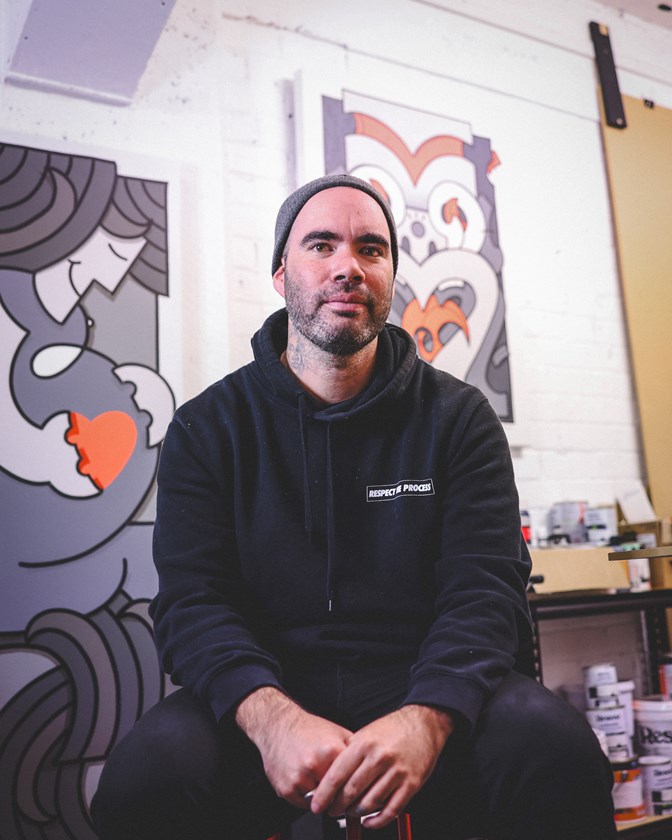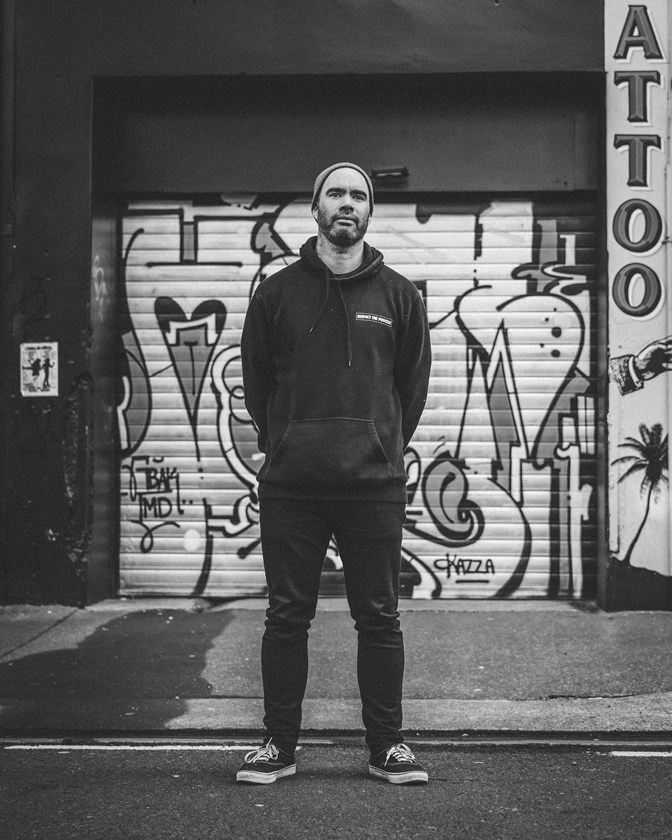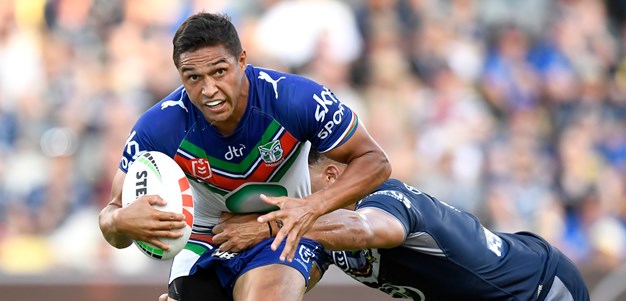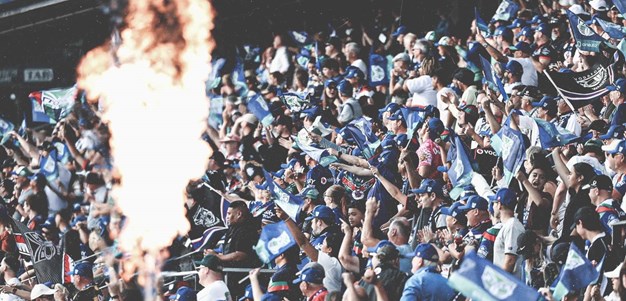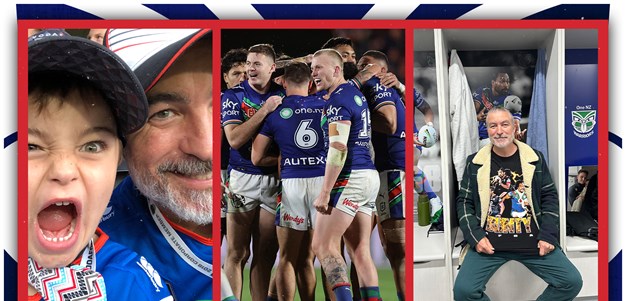The One New Zealand Warriors have collaborated with West Auckland-born and raised artist and day one supporter Haser on a limited edition merchandise range.
Haser's take on the One New Zealand Warriors' emblem is an attempt to incorporate the iconic tekoteko with a modern influence of urban culture.
He has used a graffiti-influenced typeface, laid out similar to the inaugural logo of the club’s 1995 introduction.
Haser wanted to create something that could be worn to signify belonging to something bigger than the team - it's a fanbase, a culture and, on game day, it's a nation bonded together to support the 17 players who represent our country, Aotearoa New Zealand.

ABOUT HASER
Kairau ‘Haser’ Bradley is a Māori artist of Ngā Puhi descent, born and raised in the western suburbs of Auckland, Aotearoa New Zealand.
After decades of dedication to the urban canvases and 10 years navigating the corporate space of the design world, Haser now occupies a full-time art practice.
He is one of a handful of artists at the forefront of the graffiti and street art scene in New Zealand with more than 20 years contributing to the graffiti community, representing and exhibiting at international events throughout Australasia, North America, Asia, Middle East, Europe and the United Kingdom.
Haser’s work reflects a lifetime of exploring the limits and boundaries of the alphabet in the context of graffiti.
These studies have manifested into a post-graffiti narrative which illustrates a story of his fear of love, a place for his people and hope for a better world. Similar to Haser’s works on the urban canvas, his studio works carry the same signature, saturated colour palette and are represented by bold, graffiti-inspired motifs.
Where graffiti allows a platform for bravado and egos to thrive, Haser’s studio practice digs deeper. His post-graffiti works are a personal journey that encourages honesty and vulnerability, they explore and expose his spiritual and emotional flaws in an attempt to reinforce and strengthen his wairua (spirit).
Although he has a less traditional approach, Haser’s ability to create Māori art through the lens of his graffiti persona allows him to bridge that gap and create a space for him to use his ancestors’ stories as a platform to forge his own. It’s a place where he can begin to escape the criticism of the graffiti community and the real world and it’s a space that is inspired by his ideal reality.
